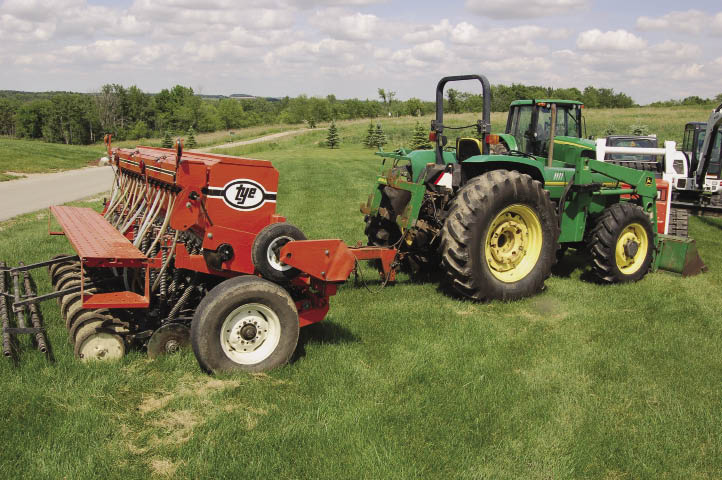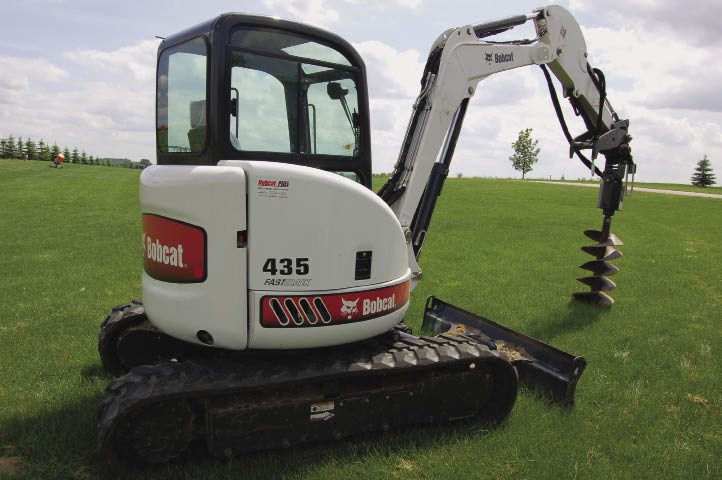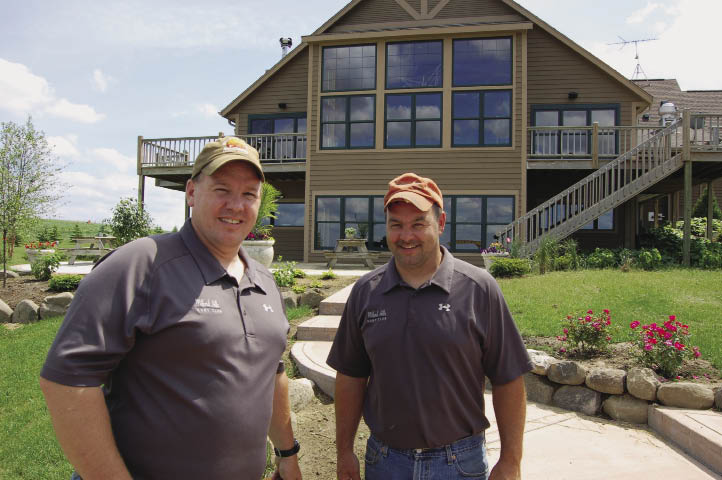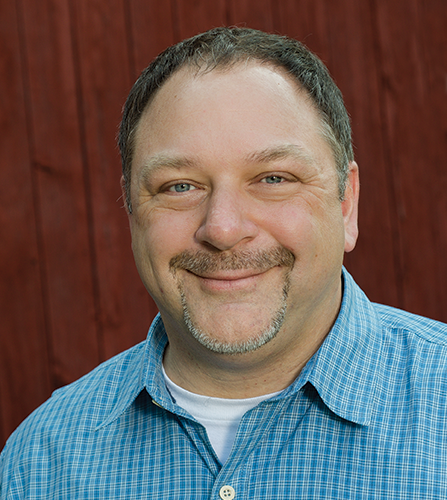It might not seem possible that Milford Hills Hunt Club, a modern, state-of-the-art destination for hunters, was once the dream of two brothers not far removed from college.
But hunting enthusiasts Lloyd and Dan Marks have used their vision and hard work to grow Milford Hills into a 400-acre destination in Johnson Creek, Wis., that sets a high standard for hunt clubs in the upper Midwest.
“My hobby turned into a job,” says Dan, smiling as he sits with is brother inside Milford Hills’ 10,000-square-foot lodge.
Like horse farms, vineyards and other outdoor endeavors, hunt clubs are opening throughout the U.S. and could are playing an integral role in the growth of rural economies in North America.
Hunt clubs can vary widely in terms of wealth and amenities, but all of them offer hunters with busy professional or personal lives a chance to enjoy their passion.
It takes a varied lineup of equipment to maintain hunt clubs, from compact or utility tractors, skid-steers and finishing mowers to food plot seeders, utility vehicles, rotary cutters and chain saws.
Hunting Industry Stats
Number of hunters in U.S.: 12.5 million
Hunting expenditures annually: $22.9 billion
Hunting industry jobs: 1 million
Money spent per hunter annually: $2,000
Hunting equipment spending annually: $10.7 billion
Largest group of hunters: Age 35-44 (25%)
— Source: U.S. Fish & Wildlife Service, others
While Lloyd and Dan have enough mechanical ability to handle some equipment problems, their top priority is taking care of individual customers or corporate members who might be dropping hundreds or thousands of dollars on their trip.
“We’ve got to run a business and we need that equipment. We’re no different than farmers that need their corn planted before the rain comes,” Dan says.
A Growing Presence
It’s hard to find comprehensive economic data on the hunt club industry, but they appear to be most numerous in the southern states. The web site www.findahuntingclub.com lists 188 clubs in 29 states, including 69 in Mississippi alone and 63 more between South Carolina, Texas, Georgia and Alabama.
Longtime hunters Gary and Beau Starkey of Starkey Outdoors Inc. in Madison, Miss., say they created the site because it’s often difficult for new clubs to find members, or for existing clubs to communicate.
According to an article published by the Agricultural Marketing Resource Center, hunt clubs alleviate the strain of population pressure on public hunting grounds by offering extended seasons and days in the field where no other hunting parties will be encountered.
The clubs are also playing an important role in the transitioning of young and first-time hunters, increasingly women, in a somewhat more controlled environment, AMRC says.
Milford Hills Hunt Club, just east of Madison, Wis., has more than doubled in size in the past 12 years and has more than 400 members.
The club has a European-style lodge with a full bar and restaurant, a dog-washing facility and meeting space, along with a rear courtyard with a panoramic view of the grounds that serves as a background for weddings and corporate events.
The idea for Milford Hills was hatched shortly after Dan Marks graduated from college, when he and four of his friends started a small club on his grandmother’s farm near Lake Mills, Wis. The club fizzled out after a few years. But shortly after, 188 acres of farmland belonging to his father became available and Dan and Lloyd decided to buy it.
From Calf Barn to Palace
The brothers started Milford Hills together in 1995 and it opened with 22 members. There were plenty of fields for hunting and sporting clays, but few amenities. “The old calf barn was our clubhouse for the first year. We put some drywall in there and fixed the floor, but we had no running water,” Dan says.

A John Deere 5500 tractor and AGCO Tye stubble drill are used to plant 100 acres of sorghum every year at Milford Hills’ hunting fields.
But Lloyd and Dan were serious about growing their business. “As we sold memberships, we put everything back into it,” Dan says of Milford Hills’ sprawling, brightly lit clubhouse that sits on a large hill.
The first section of the clubhouse opened in 1998, the kitchen was tripled in size in 2003, and a large rear addition was added in 2004, along with a pro shop. Land acquisition for the new hunting fields began in 1998.
To improve cash flow during slow times, the Marks brothers have diversified the business by hosting weddings, corporate outings and other events. One employee does the event and party planning, and another manages member relations, accounting and registrations.
The brothers say they’ve accomplished their mission of developing a full-service club that takes care of every need. “We rent and sell shot guns. If you pulled up dressed in a suit, we could deck you out and get you out there,” Dan says.
“I think the reason hunt clubs are successful today is that people have limited time and they can’t always travel to Iowa or South Dakota. If the weather’s bad, they don’t have to come out, and if it’s good weather, they may have less than an hour drive and can be there.”
“We’re more of the exception than the rule,” adds Lloyd. “In our business you have some very blue-collar clubs and you don’t get much, and then you can get what we have. You don’t see many clubs with a full licensed restaurant, event planner, full-time IT person, a full bar and a chef.”
The customer base may vary from one hunt club to the next. At Milford Hills it spans from the ordinary father-son combination to retirees to large corporate gatherings.
The brothers note that customers arriving as part of corporate events tend to be looser with the spending for shotguns, vests, shells and the like.
“But we need all the customers. We can’t just rely on the corporate entertainment,” Lloyd says. “We need the father-son coming out, the person with the new puppy coming out to do the training, and you need the established hunter.”
A chief economic pressure for hunt clubs is the economy, since it may affect how much corporations will spend on entertainment, or how much members can spend on themselves. The overhead for Milford Hills is higher than the typical operation, Dan says. “If people aren’t coming through your door, it’s not good.”
The Marks brothers say there’s plenty of room to expand Milford Hills and grow the business, including off-site meetings and corporate entertaining.

Along with a T320 compact track loader, the Marks brothers recently bought a Bobcat 435 excavator (above) for landscaping jobs and posthole digging. “We weren’t sure about buying equipment with tracks, but once you have them, you won’t go back,” Lloyd says.
In many states, hunt clubs are regular centers for Youth in the Outdoors, Becoming an Outdoor Woman and similar outdoor-education and outdoor-experience programs.
That’s a movement the Marks brothers would like to capitalize on, although they worry about fewer children getting into hunting today. Federal figures show the number of hunters 16 years of age or older at 12.5 million in 2006, down from 14 million a decade earlier. But some healthy percentages of hunting remains in some states like North Dakota and Montana, and national support for hunting remains high.
Dan says single-parent homes, politics over gun control and competition from video games and other sports are factors, but he hopes a Wisconsin law passed recently that allows children to hunt at a younger age will help.
“If we can introduce them to it when they’re younger, they may say, ‘Hey, that was a lot of fun.’ We may not see them until they’re 25 or 30 years old, but at least they’re in the hunting and shooting sports and they’re on our side when a gun-control issue comes up.”
Meeting the Demands
A big challenge that a thriving, diversified business like Milford Hills presents is the variety of tasks the Marks brothers must handle quickly and efficiently — whether it’s building up a hunting field or mowing the lawn perfectly before wedding guests arrive.
So Lloyd and Dan utilize a variety of equipment to handle these tasks.
Milford Hills is divided into 10 fields of about 40 acres each, planted with a varying mix of switch grass, grain sorghum, corn and natural cover. The fields are interspersed with trees and ponds and provide a variety of challenges to pheasant hunters.
The fields need to be maintained to provide the proper habitat for the birds, including ponds and ground cover. The cover must be appropriate for the wildlife and be kept to proper height so hunters can see each other.
The busy hunting season starts October 1 and runs through mid-April. When hunting season closes down, Lloyd and Dan spend about 2 months getting the fields back in shape for the following season.
The switch grass, a perennial, is sprayed each year with 2,4-D for broadleaf weeds, and the grass is usually burned every 3 years to completely kill the weeds and cool-season grasses that pop up.
About 100 acres of sorghum must be planted every year, requiring a regimen of plowing, fertilizing and spraying. Tree management is another task, with those growing too large or tall being cut down.
Dan says he and his brother grew up on a Wisconsin farm with a father who wanted to patch every equipment problem with a temporary solution.
Now that they’re running their own business, the Marks brothers want durable, high-quality equipment so they can spend time taking care of their customers. They won’t take chances on poorly made or lesser-known brands.
Milford Hills’ workhorse tractor is a 1996 John Deere 5500 with a loader that’s accumulated about 4,000 hours while handling spraying, cultivating, planting and landscaping chores.
Another high-use machine is the Bobcat T320 compact track loader, which is used with various attachments to unload semis full of clay targets, plow snow, handle landscaping chores, move dirt and mulch and grade the roads. “It seems like that thing is always going somewhere,” says Dan, noting the relatively new machine has accumulated 550 hours already.
A 4WD John Deere 7320 tractor, purchased in 2004, has about 800 hours and is used mostly in the spring for planting and discing, and for pulling large hay wagons filled with customers. It’s sometimes paired with an older Deere chisel plow for spring tillage and weed control.
The Deere 7320 is set up with dual tires in the rear for better flotation in poor soil conditions.
For planting sorghum and switch grass, the Marks brothers use a 10-year-old AGCO Tye 2010 stubble drill attached to the Deere 5500. They picked the drill because it’s durable, user-friendly and can handle a variety of seeds.
The brothers find they’re doing a lot of digging and moving of items, so they’ve invested in a Bobcat 435 excavator. They’ve only logged 50 hours on the machine, but it’s used for landscaping projects and digging postholes.
There’s a substantial amount of sloping, grass-covered areas at Milford Hills that must mowed, and they’ve turned to three Bob-Cat zero-turn mowers with cutting widths of 48-72 inches.

Lloyd (left) and Dan Marks opened Milford Hills Hunt Club 15 years ago in an old calf barn with no running water, but it’s grown into a thriving business. “My hobby turned into a job,” Dan says.
They also have a Land Pride rotary cutter and broadcast spreader for lawn work, 3 Stihl chain saws and a Stihl pole saw for cutting trees and managing habitat, and 2 Stihl weed eaters.
Other equipment includes utility vehicles and golf carts needed for transportation and miscellaneous jobs.
The brothers own 3 Honda utility vehicles — two Rubicons and a Big Red that can accumulate up to 120 miles a day each during the busy hunting season. The UTVs are usually sold each year and replaced with new models.
“They always run. They’re running in below-zero temperatures, or snow, or when it’s sloppy out there,” Lloyd says. “We’ve tried other brand names but nothing’s held up like Hondas.”
Three E-Z-Go Workhorse golf carts are used for transportation of employees and customers.
Dependable Dealers are Key
Milford Hills spends nearly $14,000 a year on parts and service for maintenance of the chains saws, utility vehicles, tractors, the seeder and other equipment.
In return for their business, Lloyd and Dan rely very heavily on their equipment dealers —Mid-State Equipment (Deere), with 6 locations in southern Wisconsin; Waupun Equipment Co. (New Holland, AGCO), with 2 locations in Wisconsin; Bobcat Plus in Butler, Wis., and Rob’s Performance Motorsports (Honda) in Johnson Creek, Wis.
In the past, Waupun Equipment has provided loaner UTVs to Milford Hills if repairs can’t be made immediately, and the Marks brothers have received similar treatment from Rob’s Performance if they’re in a tight spot. “That’s the kind of relationship that we need,” Lloyd says.
The consequences of broken-down equipment means frustration, embarrassment, poor word-of-mouth and lost business. There’s added pressure with events like weddings because expectations of the property are very high.
“If you’re just messing around with your house, and it’s no big deal if you don’t cut the grass in the next couple of days, you can get away with buying a lower-quality lawn mower,” Dan says. “For us, if we’ve got a wedding coming in here, that won’t work. The bride wants that lawn groomed.”
Another example is snow removal. Milford Hills has miles and miles of trails that must be plowed for customers and vehicles, a task done with the Bobcat loader and Deere 5500 tractor. “In the winter we’ve got hunters coming our way and that equipment has to run,” says Lloyd.
Recently, the Deere 7320 failed to start as the brothers prepared to transport 40 hunters on a hay wagon to a pheasant tower shoot. The tractor had already been looked at several times by a technician for the same problem. “I finally threw some ether in there to got the tractor started,” Lloyd said.
“We don’t have time to sit and work on equipment. Dealerships work on equipment every day, so it’s easier for them to do it than us trying to figure out what’s going on.”






Post a comment
Report Abusive Comment